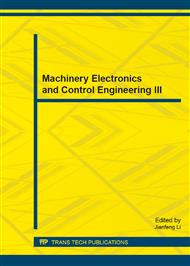p.31
p.36
p.40
p.44
p.48
p.53
p.58
p.62
p.66
Corrosion Rate and Mechanical Properties of 316L Stainless Steel Wires in Different Corrosive Conditions
Abstract:
The effects of different concentrations of the mixed solution, different test temperature conditions for corrosion rate of 316L stainless steel wires by using the weight loss method, discussion on fracture strength of 316L stainless steel wires changes after corrosion. The results showed that the higher the concentrations of the mixed solution, test temperature, the larger corrosion rate of 316L stainless steel wires, the smaller fracture strength of 316L stainless steel wires. During the test, the surface of 316L stainless steel wires occurred passivation. Though Cl- of the mixed solution didnt take direct part in the reaction, it prompted passive film rupture, accelerated the corrosion rate of 316L stainless steel wires. Meanwhile, the stress-strain curve of 316L stainless steel wires after corrosion no obvious yield phenomenon, showing the form of brittle fracture. And test temperature factors on the corrosion rate of 316L stainless steel wires and mechanical properties of the most obvious effect.
Info:
Periodical:
Pages:
48-52
Citation:
Online since:
December 2013
Authors:
Price:
Сopyright:
© 2014 Trans Tech Publications Ltd. All Rights Reserved
Share:
Citation:


